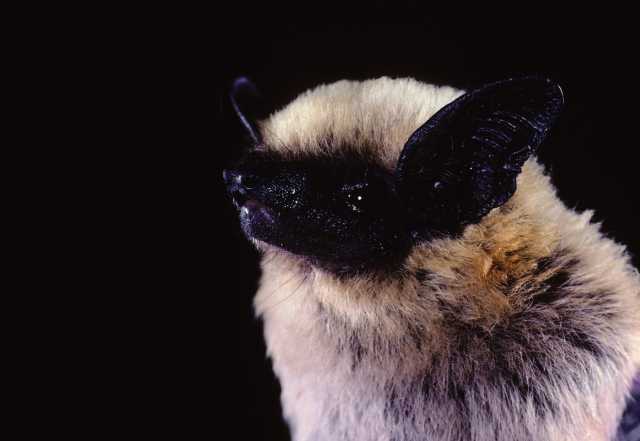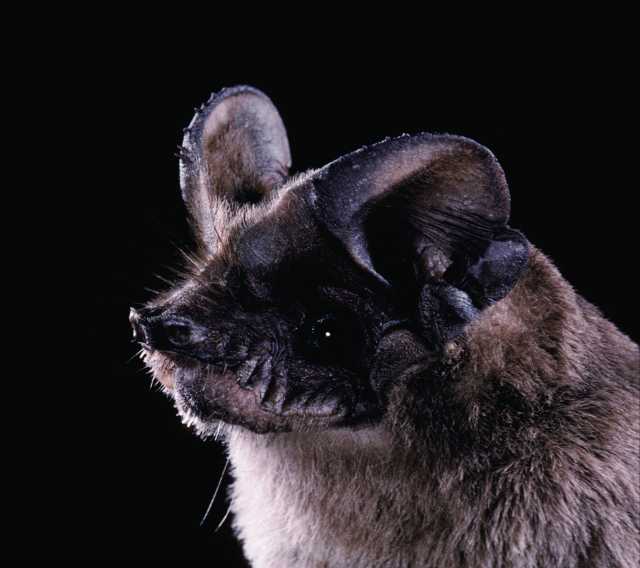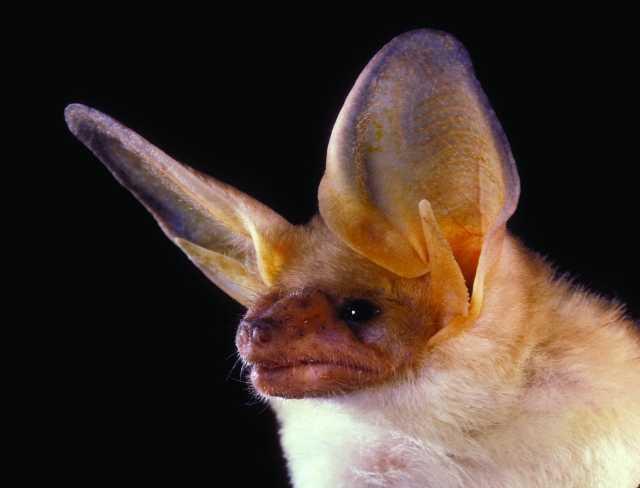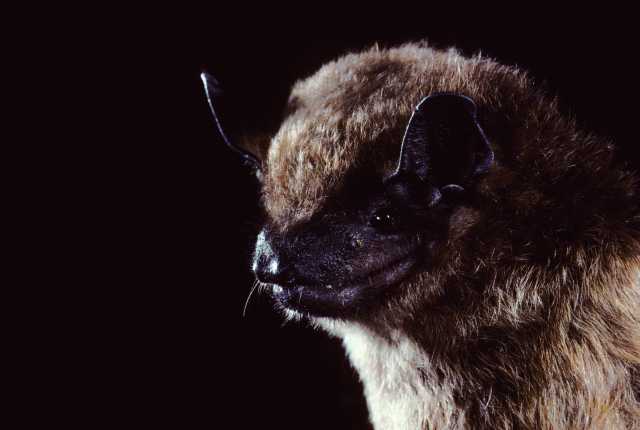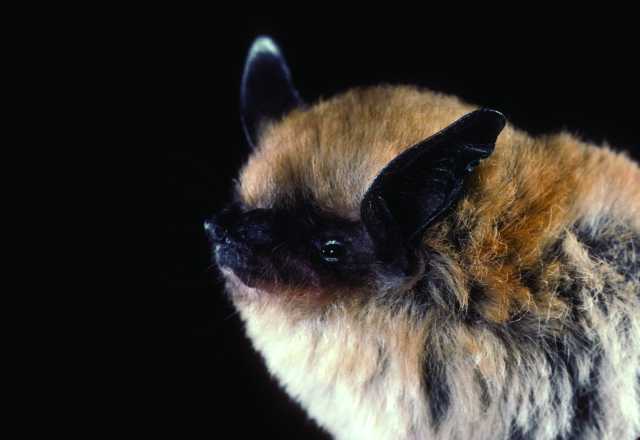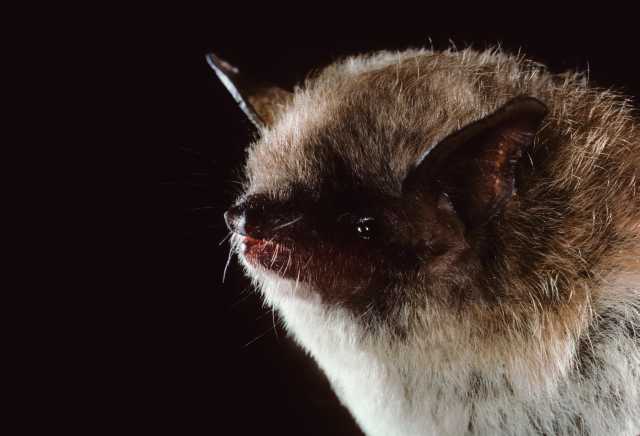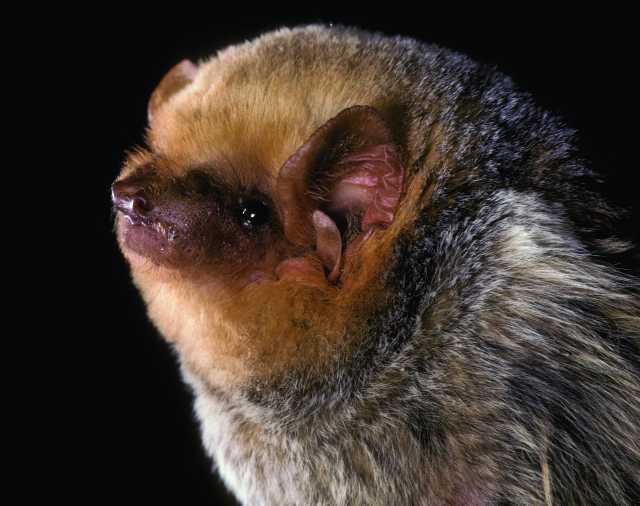Canyon Bat (Parastrellus hesperus), formerly known as the Western Pipistrelle.
Description: Body length about 2.4-3.4″, with a 7-9″ wingspan. Yellow to light grey to reddish brown fur. Membrane of wings, ears and tail are dark black. Smallest bat in the US. Keeled calcar. One premolar. Club-shaped tragus (vs. pointed tragus of Myotis).
Range: Stays in home range. Hibernates or stays active. More common in desert and lowlands of south-western North America to Mexico. Found in association with significant rock features in lower elevation mixed conifer forest in mountain ranges in CA.
Habitat: Desert, around towns and above water. Roosts in rock crevices alone or in small groups, may also be found in mines and bridges. Begins foraging before sunset, may also be active after sunrise.
Diet: Caddis flies, stone flies, moths, small beetles, leaf and stilt bugs, leafhoppers, flies, mosquitoes, flying ants, wasps and fruit flies.
Behavior:Behavior: Strong, fast and erratic flier. Gives birth to twins which fly at 4 weeks.
Risks: Destruction of rocky areas due to mining and development.

